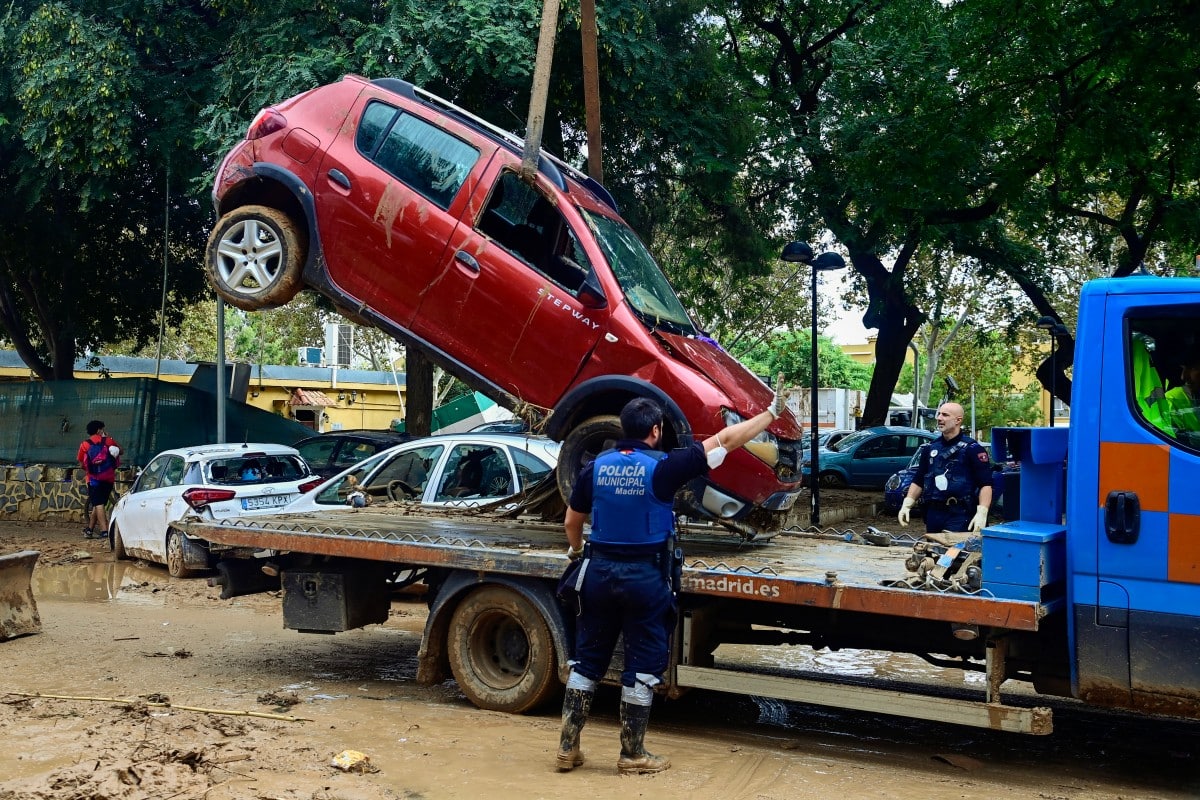
Police remove flood damaged cars in Alfafar, in the region of Valencia, eastern Spain, on November 4, 2024, following devastating floods. – The death toll from Spain’s worst floods in a generation has climbed to 21goplay7, according to rescuers. Agence France-Presse
VALENCIA — Thousands of rescuers pumped water from submerged buildings, churned through muddy streets and cleared debris on Monday as Spain braced for more deaths from its worst floods in decades.
The toll stands at 218 dead — all but four in the eastern Valencia region after authorities revised the total from 217 late Monday — and could spike in the coming days as an unknown number of people remain missing.
Article continues after this advertisementAround 17,000 soldiers, police officers, civil guards and firefighters spent a sixth day distributing aid, repairing infrastructure and searching for bodies using heavy machinery, drones and sniffer dogs.
FEATURED STORIES GLOBALNATION How the US elections will impact the Philippines GLOBALNATION Harris or Trump: America decides in knife-edge election GLOBALNATION Urgent call to Senators: Pass the 11 pending bills to protect Philippine biodiversityREAD: Wave of solidarity washes over epicenter of Spain floods
Roads and railways were gradually being repaired, while 60 percent of the telephone network had been restored, government minister Angel Victor Torres told reporters.
Article continues after this advertisementAlmost all the power grid was back up and 93 percent of the affected population has access to the gas network, said Rosa Touris, spokeswoman for the body coordinating rescue work in the Valencia region.
Article continues after this advertisementDivers on Monday concentrated their search for missing bodies in garages and a multi-storey car park in the town of Aldaia.
Article continues after this advertisementThe structure is full of “millions of litres” of water and a morgue capable of holding 400 bodies is being prepared, said General Javier Marcos, head of the army’s emergencies unit.
READ: Spain flood survivors hurl mud at the royals, top gov‘t officials
Article continues after this advertisement“To begin with a morgue was set up for around 100 victims — but we quickly understood that would be insufficient,” Marcos said.
Authorities meanwhile authorised the release of around 50 recovered bodies to their families, Valencia’s high court posted on X.
The storm caught many victims in their vehicles on roads and in underground spaces such as car parks, tunnels and garages where rescue operations are particularly difficult.
Authorities in Valencia extended travel restrictions for another two days, cancelled classes and urged residents to work from home to facilitate the work of the emergency services.
Chaos in CataloniaPrime Minister Pedro Sanchez has said Spain is carrying out its biggest peacetime deployment of the armed forces.
But relief works only reached some towns days after the disaster and in many cases volunteers were the first to provide food, water, sanitation and cleaning equipment.
Experts have questioned the warning systems that failed to alert the population in time and the speed of the response.
“They were saying ‘alert for water’, but they should have said it was a flood,” Teresa Gisbert, 62, told AFP in the destroyed town of Sedavi, saying she had “lost everything”.
For BassMotor, a small cleaning equipment business in the Valencia region, government help could not come soon enough after the floods destroyed almost all its stock.
After clearing the mud, the company needs to see “how the Spanish government and the aid are responding — which at the moment doesn’t seem to be moving forward much”, spokesman Diego Navarro Rodriguez told AFP.
“Everything is pretty uncertain. So there’s nothing left to do but wait.”
National weather service AEMET announced the end of the emergency for Valencia but torrential rain sparked transport chaos in the northeastern Catalonia region.
Barcelona’s El Prat airport, Spain’s second busiest, cancelled 153 flights on Monday, Transport Minister Oscar Puente wrote on X.
The city closed some flooded metro stations and regional trains were suspended but no human casualties were recorded in Catalonia, regional leader Salvador Illa told a news conference.
Monarchs hit by mudSpain also grappled with the aftermath of an extraordinary outburst of popular anger in which crowds heckled and hurled mud at King Felipe VI, Queen Letizia and Sanchez.
A judge has opened an investigation into the chaos in the ground-zero town of Paiporta that cut short their visit on Sunday amid widespread discontent at the perceived mishandling of the crisis.
Interior Minister Fernando Grande-Marlaska blamed “marginal groups” for instigating the violence where mud spattered the monarchs’ faces and clothes, and a window of Sanchez’s car was broken.
Spain’s transport minister told La Sexta television late Monday that it had been “a mistake” to organise the royal visit with emotions running so high.
Storms coming off the Mediterranean like the one that struck Spain one week ago are common during this season.
But scientists have warned that human-induced climate change is increasing the ferocity, length and frequency of extreme weather events.
Subscribe to our daily newsletter
“Politicians haven’t acted on climate change, and now we’re paying the consequences of their inaction,” environmental activist Emi, 21, told AFP in the devastated town of Chiva.
READ NEXT Harris, Trump end historic campaigns with final pitch to voters Is the US election really so close? EDITORS' PICK LIVE UPDATES: 2024 US presidential election BSP cool to drastic rate cuts Harris or Trump? Millions vote in tense, tight US election Senate retains OVP’s proposed P733-M budget Signal No. 1 raised over 14 areas in Luzon due to Marce Gov’t orders evacuations, deploys troops for ‘Marce’ MOST READ Chinese ships seen again at Philippine Rise Pagasa releases 11 pm update on Typhoon Marce COA: OVP sent deficient receipts on secret funds LIVE UPDATES: Typhoon Marce Follow @FMangosingINQ on Twitter --> View comments